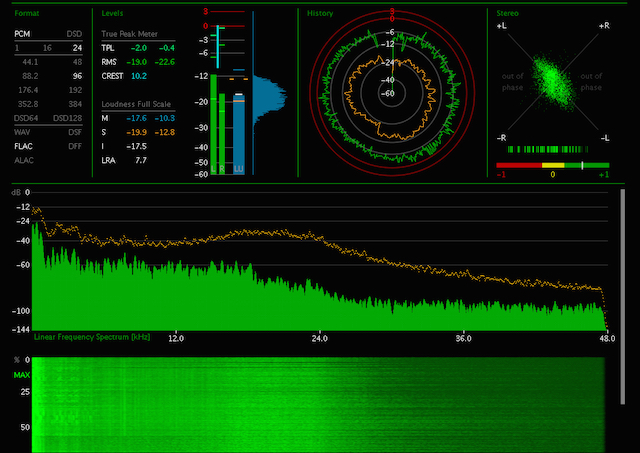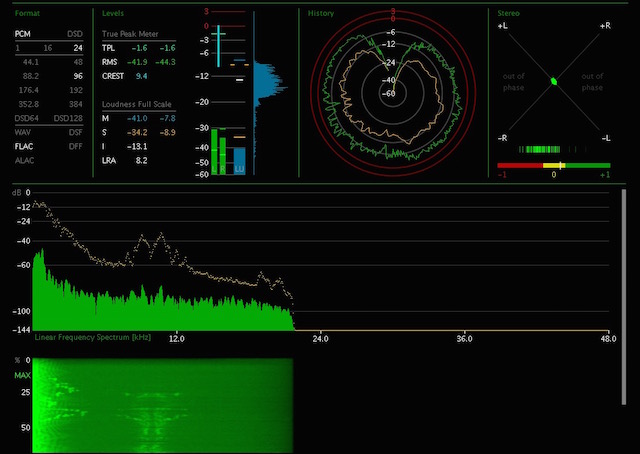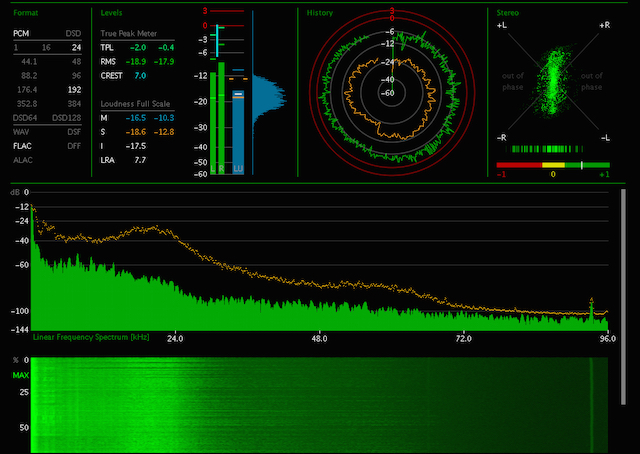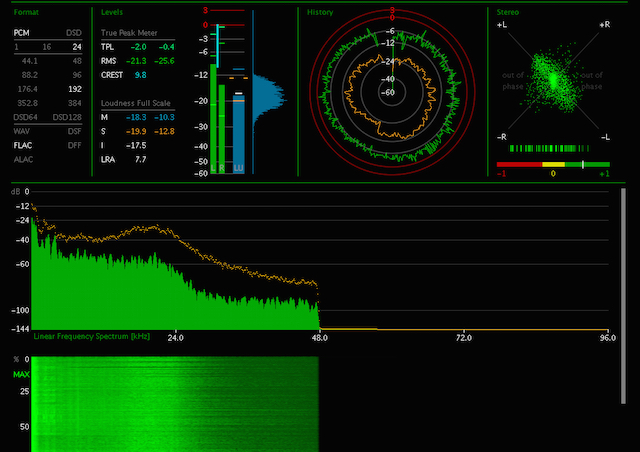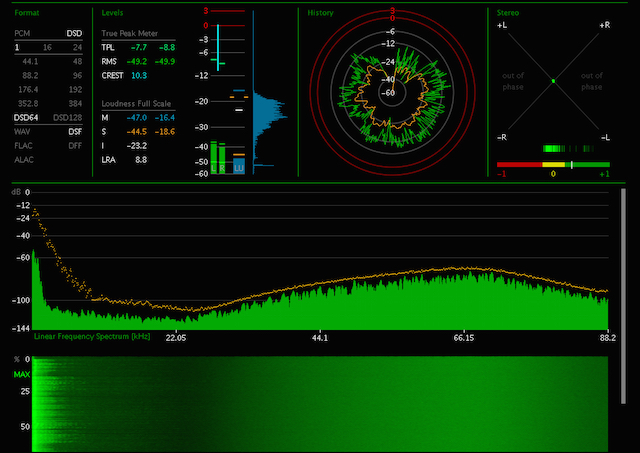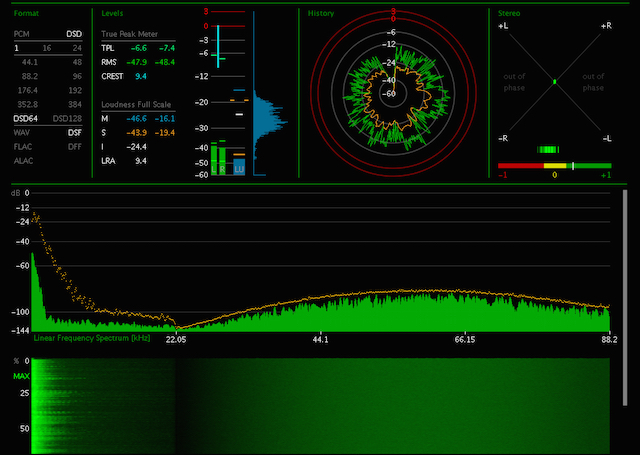High Resolution Audio – Fake or Not
True, native High Resolution Audio Format means that during recording, the fine structures contained in the music signal are adequately resolved per unit of time. A true music signal recorded with microphones contains sensitive temporal information in the 45-50 kHz frequency range. For certain instruments (for example, trumpet with straight mute) and above all for percussive sounds, this range can be higher. The transfer of fine information is not possible with equipment which uses 22 kHz frequency bandwidth (CD) or 24 kHz bandwidth (the industry and radio standard).
Reduced bandwidth always means physically insurmountable, reduced temporal resolution. Therefore, true high resolution material may not be compressed to 22 kHz or 24 kHz in any part of the production process. HRA checks the music given with spectral analysis to see whether these criteria have been met.
The correct interpretation of this spectral analysis is extremely important, however. Above 22 kHz, music signals contain fine information only at relatively low volume levels. Exactly how high this level is depends on the instrument or the ensemble. Popular music with a drum set contains high frequency information at higher volume levels than a traditional orchestra playing pianissimo; a piccolo playing short staccato tones contains more information than a tuba playing legato etc. The absolute volume level or the exact composition of the frequency spectrum above 20 kHz only says very little about the quality of the recording.
In differentiating between native resolution and a faked but declared native recording, it is much more important that there be no recognizable signs of intermittent compression of the transfer band width.
Such compression can be recognized very easily in most cases by a sharp break-off point in the frequency spectrum at one of the characteristic key frequencies - 22.05 kHz, 24 kHz or even 44.1 kHz or 48 kHz, as can be seen here:
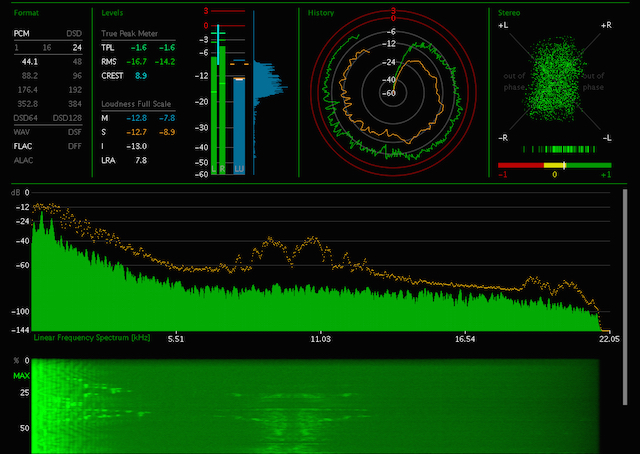
If such a break-off point with a considerable frequency drop-off is present, then it is not native high resolution material. On the other side of the break-off point, additional information can be determined regarding signal processing.
If the level drops to values in the area of the theoretical minimum of 24bit, which is 138-144bit, then we can say that simple digital up-sampling was used.
If the level drops to significantly higher values 80-120dB and is evenly distributed like white noise or if material even shows a small increase in the noise level at 176.4 or 192 kHz starting at ca. 50 kHz, then analogue mastering was followed by native high resolution A/D conversion (many A/D converters for 24/176.4 and 24/192 show this increase in the noise level near their threshold frequency). Although this is not true native, the quality can be even better than the standard version.
If the noise level increases significantly immediately before the break-off point (starting at ca. 25-28 kHz), then it is most likely SACD material, which is itself a fake, since it was pre-produced using 44.1 or 48 kHz. This is probably true for most SACDs, especially for radio-(co)productions, since 48 kHz is still standard there. This kind of material can readily be found on the market as 24/88.2 or 24/96.
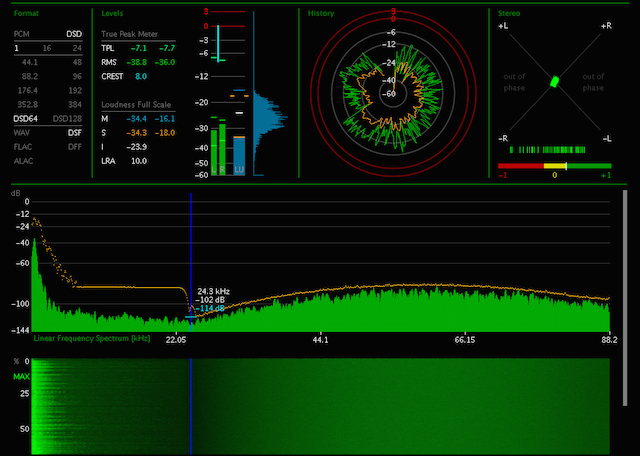
One more thing just to be complete: if the noise level significantly increases as in the previous example, but there is no break-off point, then it is not strictly a fake by definition. The recording was most likely produced wholly in DSD for SACD. Since the strong noise signal masks all fine information of the music signal just above the limit of the standard sampling rate, then the material cannot be of significantly higher quality than a standard CD. The level of quality is mostly likely similar to a 24/48 recording. This kind of material is also frequently found on the market as 24/88.2 or 24/96. It can be better than a CD, but actually has nothing to do with native high resolution audio.









